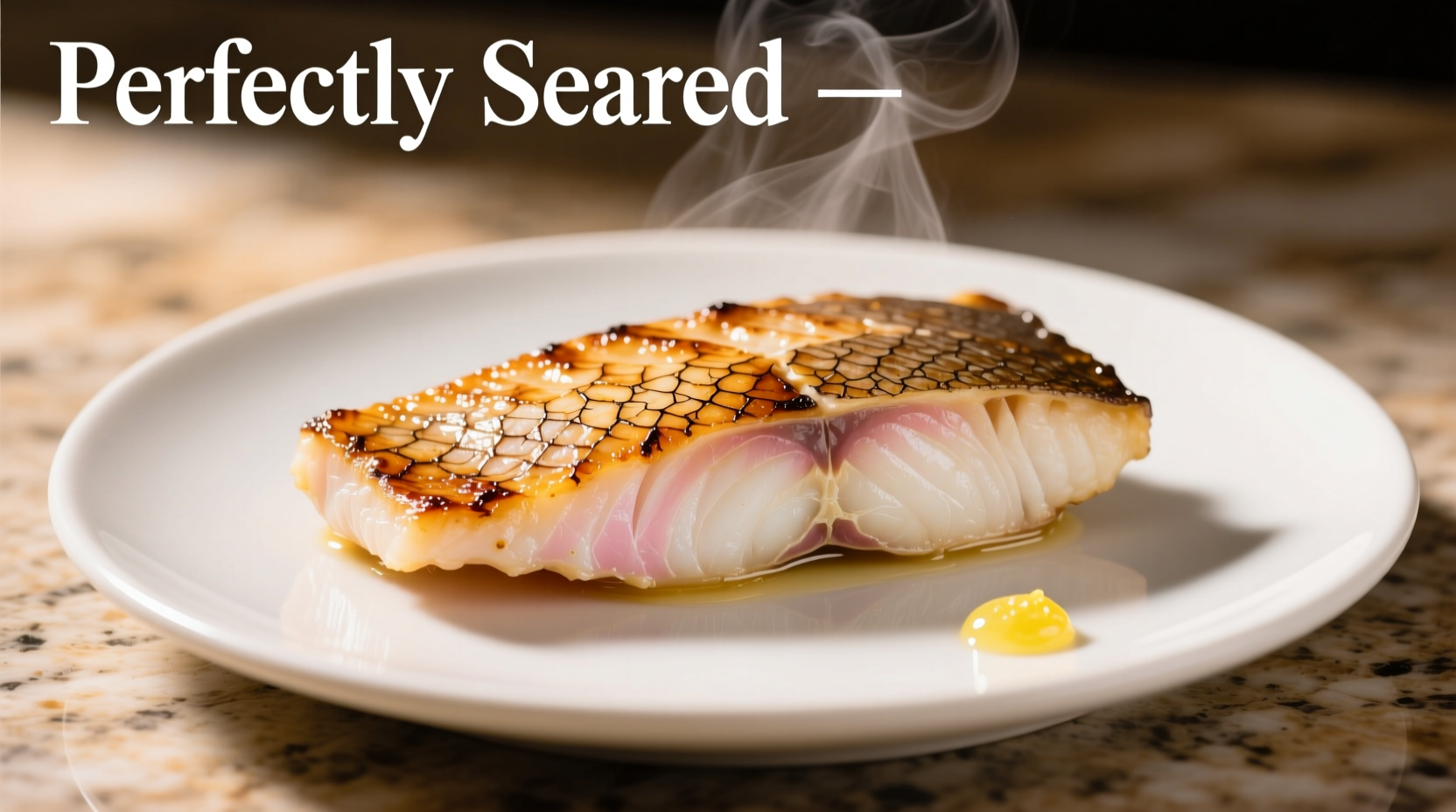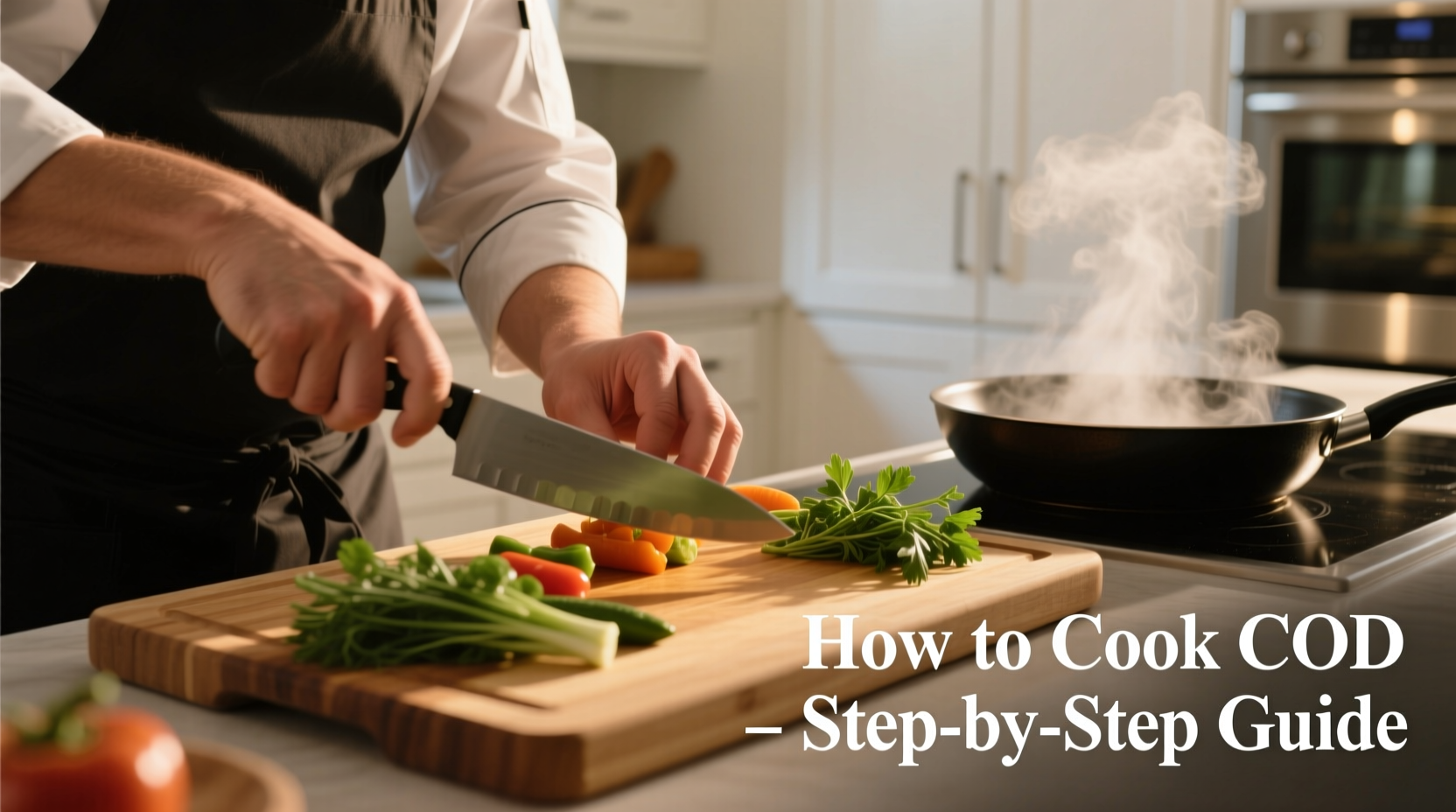Perfectly cooked cod should be moist, flaky, and tender with a delicate flavor. The best methods include pan-searing at 400°F for 3-4 minutes per side, baking at 400°F for 10-12 minutes, or poaching in simmering liquid for 8-10 minutes. Always cook cod to an internal temperature of 145°F for food safety while maintaining optimal texture.
Mastering Cod: Your Complete Cooking Guide
If you've ever ended up with dry, falling-apart cod, you're not alone. This delicate white fish requires precise technique to achieve that perfect flaky texture without overcooking. As a chef who's cooked cod in Michelin-starred kitchens and home settings alike, I've perfected methods that work every time. In this guide, you'll learn professional techniques to transform humble cod into restaurant-quality meals with minimal effort.Why Cod Deserves Your Attention
Cod stands out among white fish varieties for its mild flavor and versatile texture. Unlike more delicate fish like sole, cod holds together well during cooking while still offering that signature flakiness. Its neutral profile makes it the perfect canvas for creative flavor combinations, from Mediterranean herb crusts to Asian-inspired glazes.| Cooking Method | Temperature | Time per Inch | Best For |
|---|---|---|---|
| Pan-Searing | 400°F | 3-4 minutes per side | Crispy skin, restaurant-style |
| Baking | 400°F | 10-12 minutes | Hands-off cooking, multiple portions |
| Poaching | 160-180°F | 8-10 minutes | Moist results, delicate flavor preservation |
| Grilling | Medium-high | 4-5 minutes per side | Smoky flavor, summer cooking |
Selecting and Preparing Your Cod
The journey to perfect cod begins before you even turn on your stove. Understanding what to look for at the market makes all the difference in your final dish. Freshness indicators: Look for firm, translucent flesh with a fresh ocean scent (never fishy). The flesh should spring back when gently pressed. Avoid any discoloration or brown spots. Sustainability matters: According to the Marine Stewardship Council, Atlantic cod populations have rebounded significantly since 2010 due to improved fisheries management. Choosing MSC-certified cod supports sustainable fishing practices that maintain healthy ocean ecosystems. Preparation essentials: Always pat cod thoroughly dry with paper towels before cooking. This critical step creates the perfect surface for searing and prevents steaming. Season just before cooking to avoid drawing out moisture too early.Professional Cooking Techniques
Pan-Searing Perfection This restaurant favorite delivers crispy skin with minimal effort. Heat a heavy skillet (cast iron works best) over medium-high heat until a drop of water sizzles immediately. Add just enough oil to coat the pan. Place cod skin-side down first (if skin-on), pressing gently for 10 seconds to ensure contact. Cook undisturbed for 3-4 minutes until the skin releases naturally. Flip and finish cooking for another 3-4 minutes. Baking for Consistent Results Preheat oven to 400°F. Place cod on a parchment-lined baking sheet. For moist results, add a splash of liquid (lemon juice, wine, or broth) to the baking dish. Bake for 10-12 minutes until the flesh flakes easily with a fork but still appears slightly translucent in the center (it will continue cooking off-heat). The Science of Doneness The USDA Food Safety and Inspection Service recommends cooking fish to an internal temperature of 145°F, measured with an instant-read thermometer at the thickest part. At this temperature, cod's proteins have coagulated sufficiently for food safety while retaining optimal moisture. Going beyond 150°F risks dry, chalky texture as moisture evaporates rapidly.
Flavor Pairing Wisdom
Cod's mild flavor pairs beautifully with both subtle and bold accompaniments. The key is balancing without overwhelming:- Classic French: Lemon, parsley, and capers create the perfect acid-herb-salt balance
- Mediterranean: Tomatoes, olives, and oregano bring bright, herbal notes
- Asian Fusion: Ginger, soy, and sesame oil add depth without overpowering
- Scandinavian: Dill, mustard, and aquavit offer clean, refreshing flavors
Troubleshooting Common Cod Problems
Problem: Cod sticks to the pan Solution: Ensure your pan is properly preheated and the fish is completely dry. Don't move the fish until it naturally releases from the pan surface. Problem: Fish falls apart when flipping Solution: Use a wide, thin spatula and flip with one confident motion. For delicate fillets, cook skin-on for structural integrity. Problem: Dry, chalky texture Solution: Reduce cooking time by 1-2 minutes. Remember that carryover cooking continues after removal from heat. The ideal cod should still look slightly translucent in the center when you remove it from heat.Putting It All Together: Simple Weeknight Dinner
Combine these techniques for a foolproof meal:- Pat 1-inch cod fillets completely dry
- Season with salt and pepper just before cooking
- Heat cast iron skillet over medium-high heat
- Add 1 tbsp oil and place cod skin-side down
- Cook 4 minutes without moving
- Flip and cook 3-4 minutes more
- Rest 2 minutes before serving with lemon wedges











 浙公网安备
33010002000092号
浙公网安备
33010002000092号 浙B2-20120091-4
浙B2-20120091-4